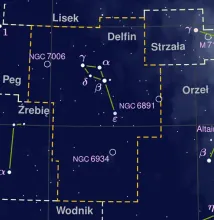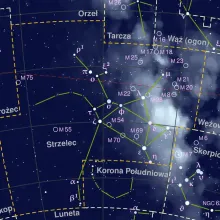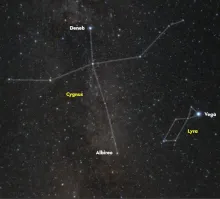Constellation Sagitta
Sagitta is a small and faint constellation located in the northern sky. Its name means "arrow" in Latin, and it is one of the smallest constellations in the night sky, ranking third smallest overall. Despite its size, Sagitta has been known since ancient times and is included in the 48 constellations listed by the Greek astronomer Ptolemy.








